 Often times, a shot and a beer go hand in hand. And President Biden is making sure the American public knows this; although this is not the traditional shot and a beer you are probably thinking of. The White House has partnered with Anheuser-Busch offering free beers if the country reaches its goal of getting 70 percent of adults at least one Covid-19 vaccine shot by July 4. However, a free beer is not the only incentive for people to get vaccinated. In an address, Biden outlined a few other perks. Go for a haircut in a Black-owned barbershop, which are traditional community hubs, and a Covid-19 vaccine comes at no extra cost. Parents who get the shots can get free child-care while they’re inoculated. Employers can cash in tax credits if they let workers feeling side effects from the vaccine take time off. I have to give a shout-out to my local brewery, Lord Hobo in Woburn, MA, as it jumped on the beer and shot idea a few weeks ago. On a rolling Tuesday basis, the brewery said any adult who wanted a vaccine could show up at its taproom and get the one dose Johnson & Johnson vaccine administered by Armstrong Ambulance EMTs, followed by a free beer ticket to enjoy in the brew hall. That’s the kind of beer and shot I can get behind. And now on to this week’s logistics news.
Often times, a shot and a beer go hand in hand. And President Biden is making sure the American public knows this; although this is not the traditional shot and a beer you are probably thinking of. The White House has partnered with Anheuser-Busch offering free beers if the country reaches its goal of getting 70 percent of adults at least one Covid-19 vaccine shot by July 4. However, a free beer is not the only incentive for people to get vaccinated. In an address, Biden outlined a few other perks. Go for a haircut in a Black-owned barbershop, which are traditional community hubs, and a Covid-19 vaccine comes at no extra cost. Parents who get the shots can get free child-care while they’re inoculated. Employers can cash in tax credits if they let workers feeling side effects from the vaccine take time off. I have to give a shout-out to my local brewery, Lord Hobo in Woburn, MA, as it jumped on the beer and shot idea a few weeks ago. On a rolling Tuesday basis, the brewery said any adult who wanted a vaccine could show up at its taproom and get the one dose Johnson & Johnson vaccine administered by Armstrong Ambulance EMTs, followed by a free beer ticket to enjoy in the brew hall. That’s the kind of beer and shot I can get behind. And now on to this week’s logistics news.
- Instacart in the news:
- How Best Buy is rethinking the role of its store employees
- GM restarting some plants hit by chips shortage
- Carriers bet on Capacity-as-a-Service
- Amazon is installing “meditation booths” in warehouses
- US to detail global distribution plan for 80 million vaccine doses
- Truckers are getting big pay hikes, but there’s still a shortage of drivers
- Sri Lanka braces for oil spill from sunken cargo ship
 Instacart relies on a huge network of gig shoppers to deliver groceries to customers across the country. As the company continues to expand, it is looking at how it can become more efficient and profitable. The answer appears to be robots. Instacart is embarking on a plan to replace its army of gig shoppers with robots. According to documents reviewed by Bloomberg, Instacart will begin building automated fulfillment centers around the US where robots would fetch groceries while human counterparts collect produce and deli products. The items would be combined for a single delivery. Automating part of the collection process would be a major departure from its current business model but would be a way to cut costs. Cheaper picking means that fees could be lowered, which could make the service more appealing to a wider customer base. While the strategy has been discussed for nearly a year, Instacart has yet to begin testing it.
Instacart relies on a huge network of gig shoppers to deliver groceries to customers across the country. As the company continues to expand, it is looking at how it can become more efficient and profitable. The answer appears to be robots. Instacart is embarking on a plan to replace its army of gig shoppers with robots. According to documents reviewed by Bloomberg, Instacart will begin building automated fulfillment centers around the US where robots would fetch groceries while human counterparts collect produce and deli products. The items would be combined for a single delivery. Automating part of the collection process would be a major departure from its current business model but would be a way to cut costs. Cheaper picking means that fees could be lowered, which could make the service more appealing to a wider customer base. While the strategy has been discussed for nearly a year, Instacart has yet to begin testing it.
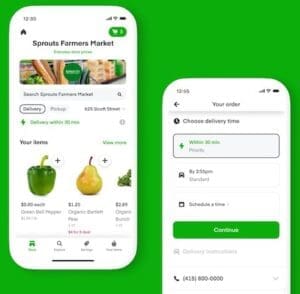 While robots may not be picking groceries for customers any time soon, Instacart is pushing to make deliveries faster. Late last week, the company announced the launch of Priority Delivery, a new online grocery service designed to “bring the in-store express lane online.” Through Priority Delivery, customers will be able to receive their online grocery orders in as soon as 30 minutes. The service also marks the debut of a new experience on the Instacart marketplace: a lightning bolt icon highlights in real time the fastest delivery windows available to customers. Priority Delivery is being launched at more than 300 stores in over 15 major U.S. cities, including Chicago, Los Angeles, Miami, San Diego, San Francisco, and Seattle.
While robots may not be picking groceries for customers any time soon, Instacart is pushing to make deliveries faster. Late last week, the company announced the launch of Priority Delivery, a new online grocery service designed to “bring the in-store express lane online.” Through Priority Delivery, customers will be able to receive their online grocery orders in as soon as 30 minutes. The service also marks the debut of a new experience on the Instacart marketplace: a lightning bolt icon highlights in real time the fastest delivery windows available to customers. Priority Delivery is being launched at more than 300 stores in over 15 major U.S. cities, including Chicago, Los Angeles, Miami, San Diego, San Francisco, and Seattle.
 The Covid-19 pandemic changed the way retailers conducted business, with an emphasis on click-and-collect taking center stage. In its first quarter earnings call, Best Buy highlighted that it saw huge growth in this service and is exploring ways to reformat stores to meet the ongoing rise in e-commerce orders. One way is to rethink how it uses its store employees. The company trialed a program where store employees delivered online orders in company-branded vans over the holiday season. With the success of the program, Best Buy is now looking to use more store employees to make home deliveries, especially on orders that request next-day shipping. Store associates are also being asked to pick more orders at the store for either curbside pick-up or delivery. This is a trend that shows no signs of slowing down.
The Covid-19 pandemic changed the way retailers conducted business, with an emphasis on click-and-collect taking center stage. In its first quarter earnings call, Best Buy highlighted that it saw huge growth in this service and is exploring ways to reformat stores to meet the ongoing rise in e-commerce orders. One way is to rethink how it uses its store employees. The company trialed a program where store employees delivered online orders in company-branded vans over the holiday season. With the success of the program, Best Buy is now looking to use more store employees to make home deliveries, especially on orders that request next-day shipping. Store associates are also being asked to pick more orders at the store for either curbside pick-up or delivery. This is a trend that shows no signs of slowing down.
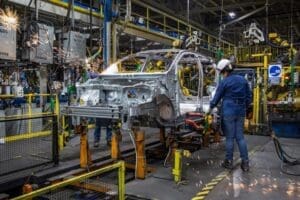 The global semiconductor chip shortage has affected many industries, but none as much as the automotive industry. General Motors announced that it will be soon be restarting production at five assembly plants around the world that have been idled due to the shortage. GM said it is restarting operations at four plants in the United States, Mexico, and Canada over the next few weeks. GM said it continues to leverage every available semiconductor to build its most in-demand products, including full-size trucks and SUVs, but said the situation continues to remain fluid globally. Earlier this month, consulting firm AlixPartners said the global semiconductor chip shortage will cost automakers $110 billion in lost revenues this year, as it forecast the crisis will hit the production of 3.9 million vehicles.
The global semiconductor chip shortage has affected many industries, but none as much as the automotive industry. General Motors announced that it will be soon be restarting production at five assembly plants around the world that have been idled due to the shortage. GM said it is restarting operations at four plants in the United States, Mexico, and Canada over the next few weeks. GM said it continues to leverage every available semiconductor to build its most in-demand products, including full-size trucks and SUVs, but said the situation continues to remain fluid globally. Earlier this month, consulting firm AlixPartners said the global semiconductor chip shortage will cost automakers $110 billion in lost revenues this year, as it forecast the crisis will hit the production of 3.9 million vehicles.
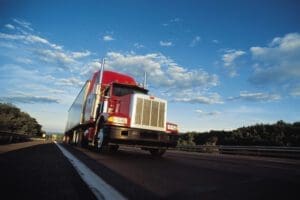 The supply chain industry has seen a rise in as-a-service (aaS) business models over the last few years. While software-as-a-service (SaaS) architecture has grown steadily, other models such as platform-as-a-service (Paas) and warehousing-as-a-service (WaaS) have been popping up. Trucking companies are now joining the fun, launching capacity-as-a-service (CaaS) businesses. CaaS is not just about the truck; it is about a positive customer experience from pickup to transit to on-time delivery. And more often than not, trucking companies are adding other services to make sure the experience is a good one. This often comes down to implementing improved technologies such as telematics, blockchain, digital freight brokering integrations, and trucking optimization platforms. This could be a market poised for massive growth.
The supply chain industry has seen a rise in as-a-service (aaS) business models over the last few years. While software-as-a-service (SaaS) architecture has grown steadily, other models such as platform-as-a-service (Paas) and warehousing-as-a-service (WaaS) have been popping up. Trucking companies are now joining the fun, launching capacity-as-a-service (CaaS) businesses. CaaS is not just about the truck; it is about a positive customer experience from pickup to transit to on-time delivery. And more often than not, trucking companies are adding other services to make sure the experience is a good one. This often comes down to implementing improved technologies such as telematics, blockchain, digital freight brokering integrations, and trucking optimization platforms. This could be a market poised for massive growth.
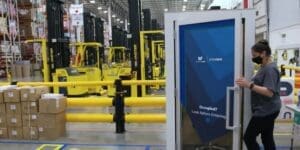 Amazon has often faced criticism over its working conditions for warehouse workers. Now the company is trying to find a way to help employees focus on their mental and emotional well-being. Amazon has unveiled what it calls “AmaZen” booths, essentially mini booths where warehouse can take a quiet rest. The “interactive kiosk” would allow workers to take time out of their shifts to watch short videos, featuring positive affirmations, calming sounds, and guided meditations. This is all part of Amazon’s recent plan to invest $300 million into an employee wellness program. The company is also boosting compensation packages and eliminating marijuana testing for new hires.
Amazon has often faced criticism over its working conditions for warehouse workers. Now the company is trying to find a way to help employees focus on their mental and emotional well-being. Amazon has unveiled what it calls “AmaZen” booths, essentially mini booths where warehouse can take a quiet rest. The “interactive kiosk” would allow workers to take time out of their shifts to watch short videos, featuring positive affirmations, calming sounds, and guided meditations. This is all part of Amazon’s recent plan to invest $300 million into an employee wellness program. The company is also boosting compensation packages and eliminating marijuana testing for new hires.
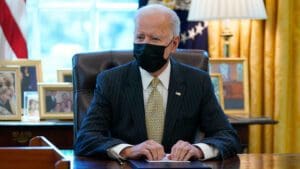 Speaking at a joint news conference with Costa Rican President Carlos Alvarado, US Secretary of State Antony Blinken announced that the US will announce in the next two weeks how it plans to distribute 80 million Covid-19 vaccine doses it has pledged globally. On Monday, Biden said his administration would send at least 20 million doses of the Pfizer, Moderna, and Johnson & Johnson vaccines, on top of 60 million AstraZeneca doses he had already planned to give to other countries. Blinken said the announcement would reveal the criteria and details of the process but that the US would focus on the equitable distribution of the vaccine, and not tie political strings to the process.
Speaking at a joint news conference with Costa Rican President Carlos Alvarado, US Secretary of State Antony Blinken announced that the US will announce in the next two weeks how it plans to distribute 80 million Covid-19 vaccine doses it has pledged globally. On Monday, Biden said his administration would send at least 20 million doses of the Pfizer, Moderna, and Johnson & Johnson vaccines, on top of 60 million AstraZeneca doses he had already planned to give to other countries. Blinken said the announcement would reveal the criteria and details of the process but that the US would focus on the equitable distribution of the vaccine, and not tie political strings to the process.
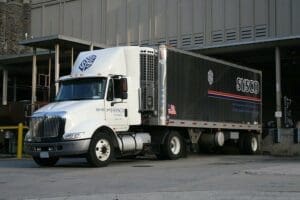 The Covid-19 pandemic drove e-commerce sales through the roof, which in turn, caused a surge in the need for long-haul truck drivers. In order to attract derivers and fulfill growing demand for shipping, trucking companies have been increasing driver pay. But it hasn’t persuaded enough people to take the long-distance driving jobs that the industry needs to fill. The problem is that turnover rates remain high, with the average annual turnover rate for truckload carriers sitting at about 95 percent. With increased pay came an unexpected problem; more drivers were driving less. With the realization that they could make the same money by driving less, more and more drivers are doing just that, and spending more time at home with family. The industry has been actively recruiting more female and millennial drivers to solve this problem. So far, it hasn’t been working.
The Covid-19 pandemic drove e-commerce sales through the roof, which in turn, caused a surge in the need for long-haul truck drivers. In order to attract derivers and fulfill growing demand for shipping, trucking companies have been increasing driver pay. But it hasn’t persuaded enough people to take the long-distance driving jobs that the industry needs to fill. The problem is that turnover rates remain high, with the average annual turnover rate for truckload carriers sitting at about 95 percent. With increased pay came an unexpected problem; more drivers were driving less. With the realization that they could make the same money by driving less, more and more drivers are doing just that, and spending more time at home with family. The industry has been actively recruiting more female and millennial drivers to solve this problem. So far, it hasn’t been working.
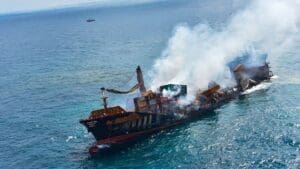 Yesterday, a chemical-laden cargo ship sank off the coast of Sri Lanka, sparking fears of an environmental disaster. The Singapore-registered MV X-Press Pearl, carrying 1,486 containers, including 25 tons of nitric acid along with other chemicals and cosmetics, was anchored off the port city of Negombo when a fire erupted onboard after an explosion on May 20. A salvage crew tried to tow the vessel to deeper water, away from the coast, but the attempt was abandoned after the rear of the ship touched the seabed. Aside from the flaming containers filled with chemicals that tumbled off the ship’s deck and into the sea, hundreds of tons of oil from fuel tanks could leak into the sea, devastating nearby marine life. Singapore authorities have started their own investigation into the incident.
Yesterday, a chemical-laden cargo ship sank off the coast of Sri Lanka, sparking fears of an environmental disaster. The Singapore-registered MV X-Press Pearl, carrying 1,486 containers, including 25 tons of nitric acid along with other chemicals and cosmetics, was anchored off the port city of Negombo when a fire erupted onboard after an explosion on May 20. A salvage crew tried to tow the vessel to deeper water, away from the coast, but the attempt was abandoned after the rear of the ship touched the seabed. Aside from the flaming containers filled with chemicals that tumbled off the ship’s deck and into the sea, hundreds of tons of oil from fuel tanks could leak into the sea, devastating nearby marine life. Singapore authorities have started their own investigation into the incident.
That’s all for this week. Enjoy the weekend and the song of the week, George Thorogood’s One Bourbon, One Scotch, One Beer.
















